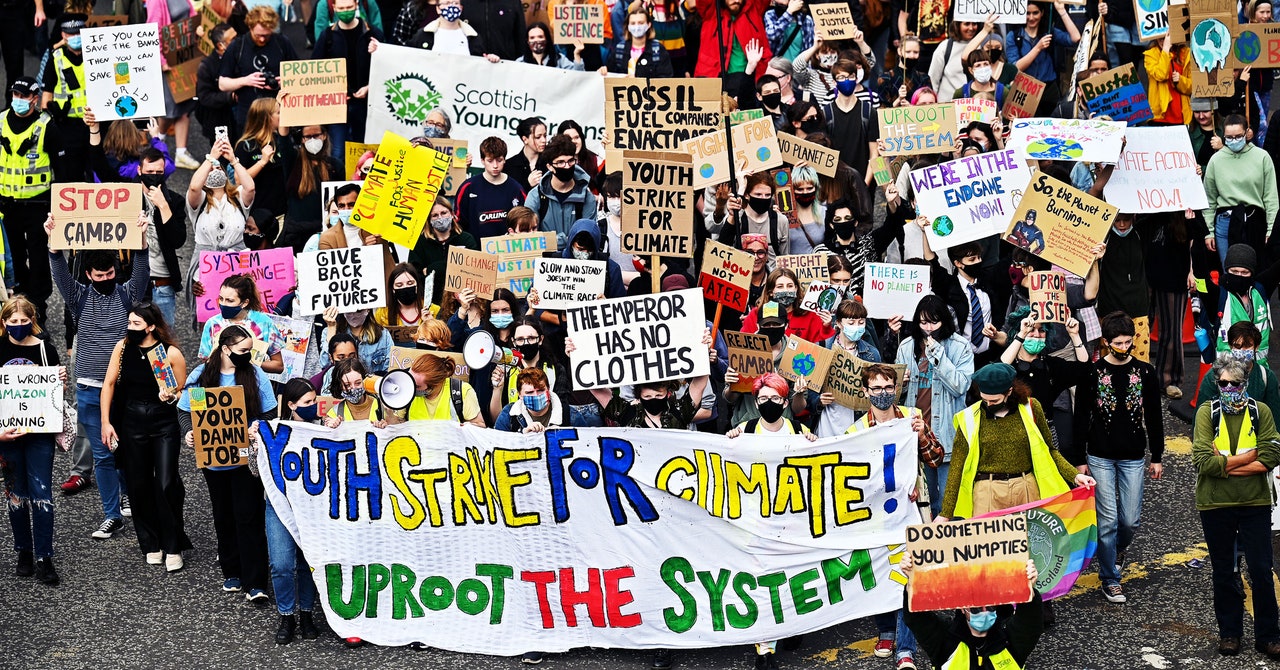
When kids and teenagers think about the future, they have an extra burden: They have to deal with more of it than adults. An adult might look at the United Nations’ most recent climate report, which models the long-term effects of failing to contain the rise in global temperatures, and figure they’ll be long gone before the worst of the floods and firestorms hit. Which of course misses the point that climate change is already killing people, and that we need immediate action to keep it from getting worse.
Kids today are facing 70, 80, 90 more years of this stuff.
Tara Crandon, a psychologist at the QIMR Berghofer Medical Research Institute and the University of Queensland in Australia, hears these kinds of fears from her young patients. “Some of the young people that I’ve seen in practice are talking about not wanting to have children,” says Crandon. “Or ‘What’s the meaning in life, when this is what my future is going to look like?’ It sort of doesn’t seem like anything’s really being done about climate change. I think that’s a massive contributor to the kind of anxiety that we’re seeing for young people, because they are having to look so far ahead into their future, and through the lens of climate change that future looks really bleak.”
Crandon wanted to learn about what influences this anxiety for young people, so she coauthored a paper, published in January in the journal Nature Climate Change, overviewing factors like where the child lives, their family life, and their school community. The team concluded that, counterintuitively, anxiety can actually be a helpful thing when it comes to confronting the climate crisis—at least when processed correctly. In their paper, the researchers call climate anxiety “an adaptive response to a real threat, as well as a potential cause of impairment.”
WIRED sat down with Crandon to talk about why that is, why kids and teens are particularly vulnerable to climate anxiety, and what parents and professionals who work with young people can do about it. (This conversation has been condensed and edited for clarity.)
WIRED: It would be great to define climate anxiety and climate grief, two terms we’ve heard a lot about recently. What’s the difference?
Tara Crandon: The really big difference between climate anxiety and climate grief is that grief is more of a mourning response. It’s more about longing and loss—things that have happened now, or in the past, that we’re losing. Whereas anxiety is more something that’s anticipating the future. And that might be losses, but it’s more of a fear, worry, and dread.
I work with a lot of young people and children in my practice and started to notice them really coming in and talking about this existential fear and worry about climate change. And I started to notice as well that some would respond in really different ways. For some young people, that’s letting that anxiety drive them into looking for ways that they can do something meaningful for themselves, for their values, for the planet—drawing on hope, and really responding in helpful ways. And then I noticed as well that there were other young people who become overwhelmed and frozen by that same anxiety. Maybe they feel more helpless, hopeless. That anxiety starts to get in the way of them being able to live their lives meaningfully.


